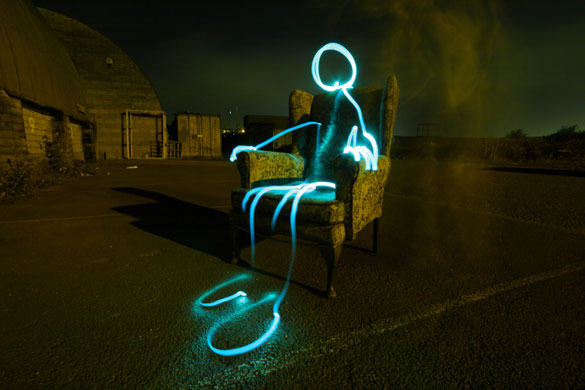 Light Painting, or Flashlight Photography, is a totally unique way of looking at light in a design—instead of being an accent, light sources themselves become the subject. This art form is brilliantly simple (though hard to master) and has an almost endless potential to liven up a design. Before diving into the nuts and bolts of how to create your own Light Painting experiments, let’s take a look at an example of the style that’s appeared in a big-house productions.
Light Painting, or Flashlight Photography, is a totally unique way of looking at light in a design—instead of being an accent, light sources themselves become the subject. This art form is brilliantly simple (though hard to master) and has an almost endless potential to liven up a design. Before diving into the nuts and bolts of how to create your own Light Painting experiments, let’s take a look at an example of the style that’s appeared in a big-house productions.
Some of you may have seen this Sprint advertisement that aired a while back. When we talk about treating light as the subject, we’re referring to exactly what this classic advert has done. Go ahead and take a peek, keeping in mind that the only things the designers used were cameras, tripods, and various light sources. Sprint Advertisement Link
Using basic photography equipment, the creators of this commercial were able to produce a neon-encrusted piece of art that highlights the company’s progressiveness—but you don’t need nearly as large a budget as they did to do the same in your designs.
In creating your Light Paintings, be prepared with the following equipment:
1. A camera that’s capable of longer exposure times, as you’ll need this to capture just the light source over the period of the shot.
2. A dark or semi-dark enclosure that highlights the light.
3. A tripod. Because you’ll be performing very long exposures, keeping the camera steady is a must to avoid any shakiness in the end result.
4. A flash light—that’s a torch for you United Kingdom readers—or other light source to produce the subject of your design.
That’s it! Now, to create the final product simply line up the shot where you want it and set the exposure on your camera to a relatively long time. Feel free to step down the aperture as low as needed. Once that’s all done—and you’ve turned off the lights if you’re inside—it’s time to work!
Use the flashlight to “smear†the light like a brush. Remember that areas where you linger longer will be more brightly lit. Don’t wait too long or you’ll “burn†the image.
That’s all there is to it! With Flashlight Photography and a bit of creativity, you’re designs can take on a whole new light—no pun intended.



